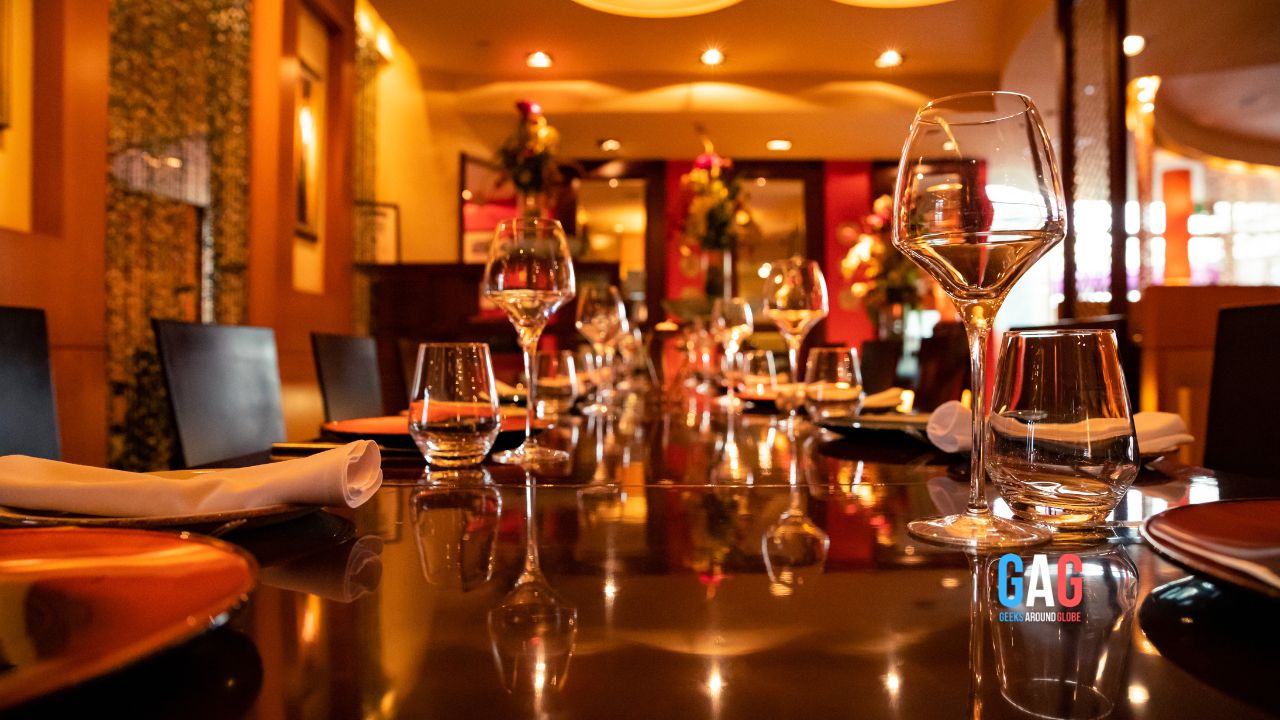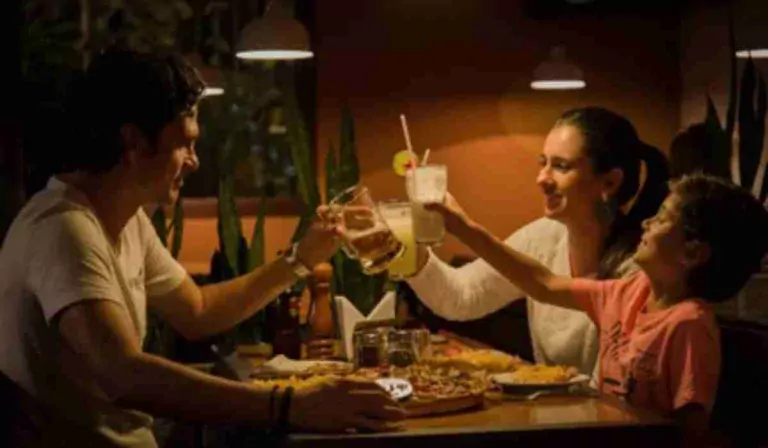When we step into a restaurant, it’s not just the aroma of delectable dishes or the warm greetings from the staff that captivate us. It’s the entire experience, from the moment we set foot through the door, that contributes to our dining enjoyment. A crucial yet often overlooked aspect of this experience is restaurant furniture. It’s not merely functional; it’s an integral part of setting the stage for food appreciation. In this article, we explore the multifaceted role of restaurant furniture in shaping your dining experience.
Furniture and Ambiance
The ambiance of a restaurant immediately sets the tone for your eating experience. Restaurant furniture is crucial in generating this ambiance.
Lighting and color schemes work in tandem with stylish restaurant furniture to create the overall feel of the restaurant. Warm, dark lighting and wooden furnishings provide a pleasant and intimate atmosphere that is great for romantic dinners. Brightly lighted spaces with modern, minimalistic furniture, on the other hand, exude a sense of freshness and openness, making them ideal for casual breakfasts or family gatherings.
Music and sound also contribute to the atmosphere, and the furniture you choose can affect sound absorption. Soft, cushioned furniture can muffle sounds, allowing for more intimate conversations, yet hard, wooden surfaces can improve overall acoustics.
The selection of artwork and design matches the restaurant furniture. A restaurant with old, ornate furniture and classical art on the walls takes customers to another age, whereas a restaurant with contemporary furniture surrounded by abstract art provides a modern and trendy atmosphere. Restaurant operators carefully choose these items to create the ideal mood that complements their food concept.
Furniture and Thematic Tone
Restaurant furniture is more than just a functional item; it is also a vehicle for storytelling. Each piece of furniture contributes to the establishment’s theme tone.
Restaurant furniture themes might range from rustic, farmhouse-style tables in a comfortable bistro selling comfort food to sleek, stainless steel tables in a high-end, urban institution. These selections establish a visual narrative that informs customers about the restaurant’s personality and what to expect.
The alignment of commercial-grade restaurant furniture style with food and target audience is critical. A casual, family-friendly restaurant, for example, may use durable, easy-to-clean furniture that can survive the occasional spill. An elite seafood restaurant, on the other hand, may choose exquisite, nautically-themed furnishings to underscore its coastal identity.
When considering thematic tone, the importance of dinnerware and flatware should not be overlooked. Fine china and silverware elevate the upmarket experience, while rustic ceramics and wooden serving boards bring farm-to-table meals to life.
Ergonomics and Comfort
Comfortable seating is vital in prolonging the dining experience. Whether it’s a quick lunch or a leisurely multi-course dinner, nobody enjoys sitting on an uncomfortable chair for an extended period.
Ergonomic design plays a critical role in this aspect. Well-designed restaurant chairs and tables provide lumbar support, encouraging diners to linger over their meals. Balancing comfort with space efficiency is also a challenge, as restaurant owners want to maximize seating without sacrificing comfort. Many restaurants choose versatile seating options, such as booths or banquettes, to accommodate both individual diners and larger groups comfortably.
The ability to linger at a restaurant often leads to increased spending as guests are more likely to order additional courses or drinks. A well-thought-out seating arrangement can influence the overall experience and, consequently, the restaurant’s revenue.
Materials and Sustainability
Materials used in restaurant furnishings are more investigated in today’s environmentally concerned world. Eco-friendly restaurant furniture materials not only reflect a dedication to sustainability but also appeal to a rising number of environmentally conscious diners.
Popular materials include salvaged wood, recycled metals, and sustainable bamboo. They are not only environmentally friendly but also long-lasting and aesthetically beautiful. These materials improve the overall appearance of the restaurant and contribute to its distinct personality.
Considerations for durability and maintenance are equally significant. Restaurant furniture made of high-quality materials can survive the demands of a busy establishment, from daily use to occasional spills. Easy-to-clean surfaces, stain-resistant materials, and durable construction all help to keep the furniture in good condition.
The importance of environmentally friendly options on customer perception and loyalty should not be underestimated. Diners who prioritize environmentally friendly activities are more likely to return if they see a restaurant’s dedication to sustainability reflected in its furniture and overall appearance.
Customization and Branding
Restaurant furniture is an effective branding tool. Branding through furniture selection can leave a lasting impact on customers.
Custom-designed furniture offers a one-of-a-kind opportunity to exhibit a restaurant’s personality. It enables the incorporation of logos, colors, and themes, which reinforces the brand’s presence in the dining environment. When a restaurant’s furniture is custom-designed, it provides patrons with a distinctive and coherent experience.
Branding extends beyond the actual form of the furniture. Branding consistency is critical, and this extends to staff appearance and uniforms. Restaurant personnel dress, from waitstaff to the chef, should be consistent with the overall theme and identity of the restaurant, providing a united impression.
Branding strategies for the eating experience go beyond merely aesthetics. From the menu design and interior decor to the staff’s demeanor and clothes, a well-branded restaurant provides a consistent experience.
Trends and Innovations
Restaurant furniture is not a static industry. It is a dynamic field that adapts to new trends and advances.
Changing societal conventions, as well as developments in materials and technology, can all have an impact on emerging trends in restaurant furniture design. Open kitchens, for example, are becoming more popular, and furniture options are adapting to create a seamless transition between the dining room and the kitchen, improving the participatory nature of dining.
Restaurant furniture is increasingly incorporating technology and current aesthetics. Dining is becoming more engaging and convenient thanks to smart furniture that has built-in chargers, menu screens, and interactive components. These advancements improve the whole dining experience while also catering to a tech-savvy demographic.
Collaborations with local artists and designers are becoming more common. Many restaurants are commissioning one-of-a-kind artworks to enrich their interiors with creativity and local flavor. This method not only benefits the local creative community, but it also distinguishes the restaurant in a congested market.
Experimentation is a feature of modern restaurant design. Restauranteurs are increasingly prepared to stretch the boundaries of standard furniture design to offer distinctive eating experiences, from employing unorthodox materials to experimenting with shape and form.
Because restaurant design is continuously evolving, customers are constantly treated to new and fascinating atmospheres, giving each visit a unique experience.
Elevating the Dining Experience Through Thoughtful Design
Restaurant furniture serves more than one purpose. It is an essential element in creating an amazing dining experience. It is crucial in setting the mood, defining the restaurant’s thematic tone, assuring comfort, promoting sustainability, and employing furniture as a branding strategy.
The psychology of dining, as well as changing trends in restaurant furniture design, demonstrate its significance. As restaurants look for new ways to improve the eating experience, thoughtful design is at the top of their priority list.
Take a moment to appreciate not only the cuisine but also the carefully curated ambiance and furniture that add to your overall happiness the next time you dine out. You are a vital part of this artistic ballet of culinary excellence and design as a visitor, and it is an experience to relish and remember.







